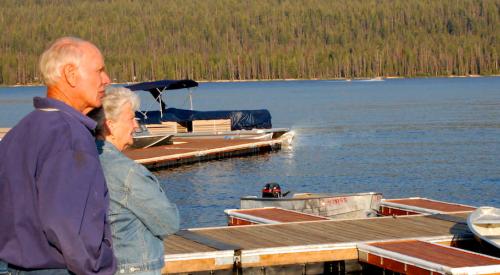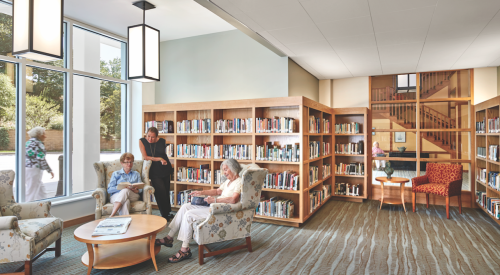|
Heather McCune's Editorial Archives
|
A soaring seniors’ population, who will live longer, healthier lives, presents new opportunities and challenges to the housing market. Accommodating home modifications and creating more housing choices will be critical, according to a recently released report by the Joint Center for Housing Studies of Harvard University.
Significant findings in Housing America’s Seniors, include:
"Most seniors of tomorrow will live longer, live healthier and live wealthier," explains Nicolas Retsinas, director of the Joint Center. "They want to age in place, though they will not be able to escape the consequences of aging. Our findings challenge the housing industry and public policy makers to respond with home modifications and supportive services that enable seniors to live safely, comfortably and productively."
One in Ten
Seniors have the highest homeownership rates of any age group, making up nearly one-quarter of all owners. Though they move much less often than younger households, people 65 or older currently account for about one-tenth of buyers of new home buyers. People between the ages of 55 and 64 account for another tenth.
Fully 30% of American do change residences after they reach the ago of 60. At least four-fifths of the moves senior make are local. In a typical year, only about one percent of the elderly move across a state boundary. Seniors who make long-distance moves tend to be younger, healthier and somewhat better educated. They also have higher incomes and traditionally seek an active retirement lifestyle community.
Households age 65 and older remain an important source of demand for new housing. Approximately 38 percent of movers in this age group purchased a new house in the four years from 1994 to 1997, accounting for 9.4 percent of the new homes produced during that period.
While aging in place is the preferred option for seniors today, age-restricted housing offers special alternatives. Roughly seven percent of those age 70 and over living outside of institutions - about two million seniors- now reside in age-restricted communities that do not provide services to residents. In the Mountain and South Atlantic states, more than one in 10 seniors live in this type of community; in the Pacific states, the share is about nine percent.
Where To Live
One of the greatest uncertainties in the senior housing market is whether tomorrow’s elderly will move more frequently and longer distances than today, according to the Harvard report. Assuming that recent trends continue, the senior population will be geographically distributed roughly in proportion to where the baby boomers and their parents now live. By 2025, roughly 10 percent of each state’s population will be over age 65.
Certain destination areas are, however, expected to gain more than their current share of the elderly population. The Joint Center research found that by 2025, the following states will substantially outpace the national rate: Alaska, Arizona, Colorado, Georgia, Idaho, Montana, New Mexico, Nevada, North Carolina, Oregon, South Carolina, Texas, Utah, Washington and Wyoming. California, Florida and Texas together are expected to account for 29 percent of the total increase in the senior population. The states that will significantly lag national growth trends include Connecticut, District of Columbia, Illinois, Massachusetts, Michigan, New Jer-sey, New York, Pennsylvania and Rhode Island.
Heather McCune is the Editor-in-Chief for Professional Builder and Luxury Home Builder. Please email her with any comments or questions regarding her column.











